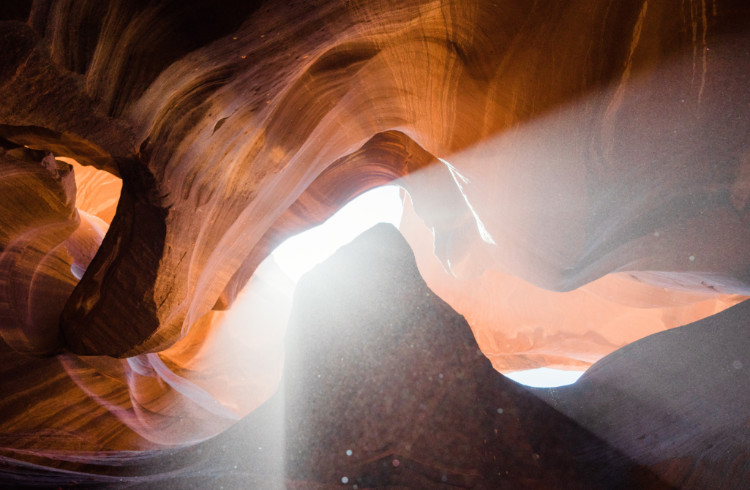
History of Antelope Canyon
With its colorful, curved rock walls, Antelope Canyon is one of the most photographed destinations in America. It's a sight to behold, but its beauty isn't just skin deep. The canyon's history goes back millions of years and tells a tale of both nature's tenacity and humans' spirituality. Read on to learn more!
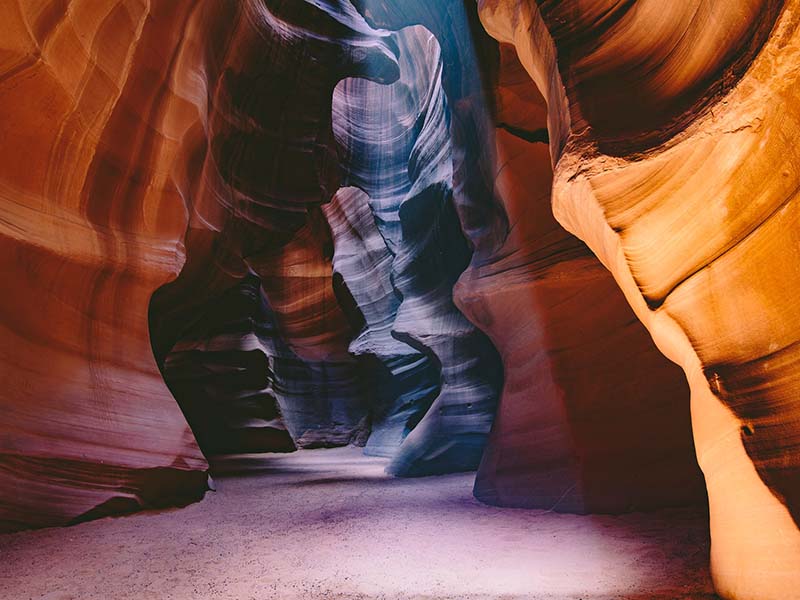
The Geological History of Antelope Canyon
Antelope Canyon is a slot canyon — a long, narrow canyon — in Page, Arizona. There are many slot canyons around the world. Another famous one is the Grand Staircase-Escalante National Monument in Utah.
Slot canyons can be carved out of different kinds of rock. In the case of Antelope Canyon, it's sandstone. Over the course of millions of years, the sandstone has been eroded. The main cause of erosion has been flash flooding, though wind has also contributed.
Antelope Canyon's rock walls look magical, with their smooth, flowing curves. When you consider how the canyon was formed — by rushing water pouring through the sandstone — it becomes clear why the rock walls look the way they do!
Specifically, Antelope Canyon is part of a geological formation called Navajo Sandstone. This is a specific sheet of rock that spans four U.S. states, including Arizona.
The Navajo Sandstone is noted for its wide range of colors. This contributes to how colorful the rock walls at Antelope Canyon are. Along with the light beams that periodically shine down through the narrow opening of the rock walls, the canyon is visually stunning.
The erosion in Antelope Canyon hasn't been uniform. The canyon is split into two main sections: Upper Antelope Canyon is wider, shaped like an "A," and has fairly even ground. Lower Antelope Canyon is narrower, deeper, bumpier, and is shaped like a "V."
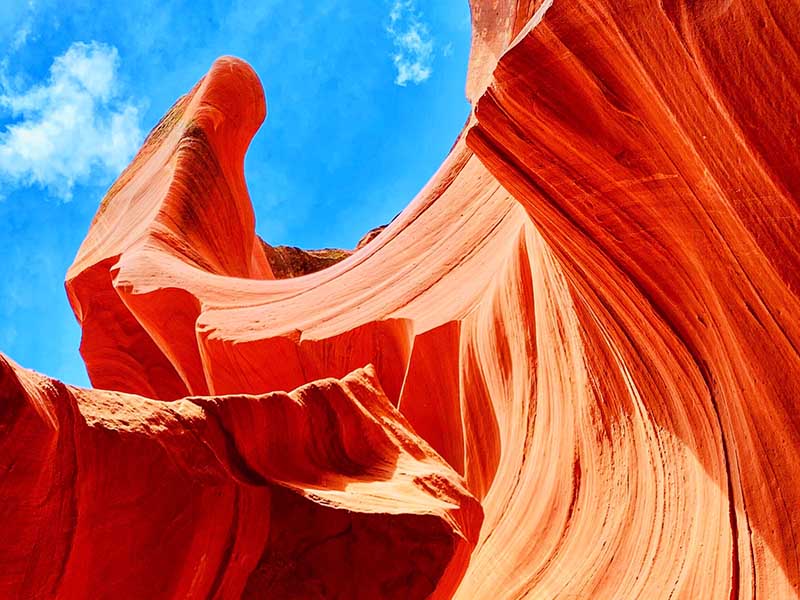
The Human History of Antelope Canyon
The human history of Antelope Canyon doesn't stretch quite as far back as its geological history, but it's incredibly interesting nonetheless.
The Canyon's Discovery
The Navajo people aren't the first people to have lived in the area around Antelope Canyon, but they are the enduring inhabitants. The tribe arrived in the Southwest U.S. somewhere between 600 and 1,000 years ago.
The canyon wasn't actually discovered until much later, though. There are two conflicting stories of how it was discovered.
- There is a Navajo tradition that states it was discovered in 1864 by a group of Navajo people who ran away from the tragic "Long Walk."
- It may also have been discovered in 1931 by a young Navajo girl who stumbled upon it while she was herding sheep.
Antelope Canyon as a Sacred Place
According to Navajo beliefs, Antelope Canyon was formed not by erosion but by the Holy People. It's believed that the spirit world and our world intersect at Antelope Canyon. The canyon thus symbolizes balance and a connection between spirit and nature.
As you can imagine, the canyon is a pretty big deal! To this day, Antelope Canyon is celebrated and revered by the Navajo people.
The mere act of entering Antelope Canyon is considered a ritual. Navajo people pause before entering the canyon to ensure that they're entering with the right state of mind. In addition, a ceremony takes place every four years to thank the elements for creating such a beautiful masterpiece.
In 1997, Antelope Canyon was officially recognized as a protected Navajo Tribal Park within the Navajo Nation.
Antelope Canyon as a Tourist Attraction
The first tours of Antelope Canyon were offered in 1983, when the Pearl Begay Family (a Navajo family) began operating tours. Since then, the number of tour operators has grown.
All the tour operators have one thing in common: they are Navajo. Due to the canyon's spiritual importance, you can only visit it on a Navajo-led guided tour. There are quite a few to choose from. If you're curious, here's our review of one of them: Adventurous Antelope Canyon Tours.
Antelope Canyon tours have strict daily capacities, so tickets tend to sell out quickly, especially during summer. Spring, fall, and winter are less busy but have lower chances of seeing the canyon's iconic light beams.
In addition to the tours of the canyon itself, you can also book Antelope Canyon tours from Las Vegas and other cities. These tours let you travel in comfort and style, without having to worry about planning and transportation.
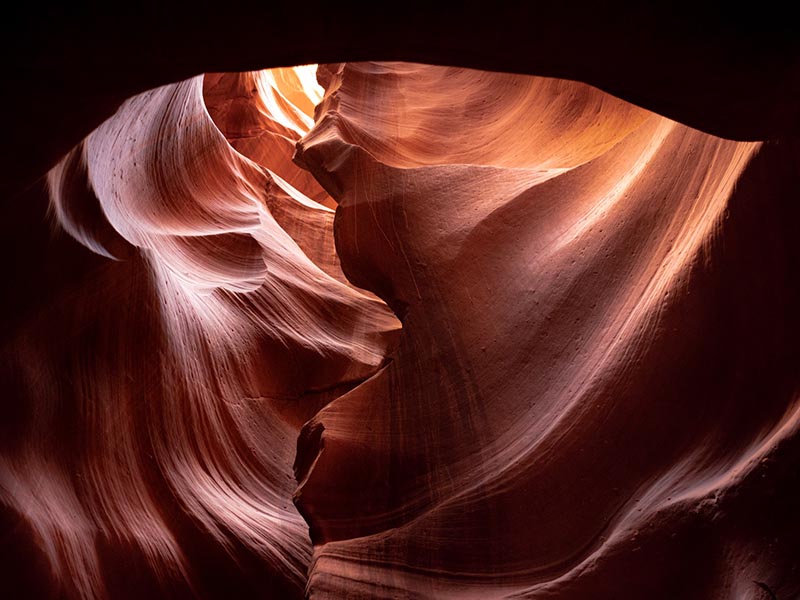
It's as Dangerous as It Is Beautiful
Antelope Canyon has a tranquil beauty to it, so it's easy to forget how viciously it was formed: by flash floods. As the canyon erodes, it only becomes more susceptible to floods. Because of this, tours have to be canceled when there is rain at the canyon. They may even be canceled if there has been rain nearby but not at the canyon itself.
To date, there has been just one fatal incident at Antelope Canyon. In 1997, the canyon claimed the lives of 11 people when flash floods surrounded them during a tour. Some of the bodies were found inside the canyon, while others were washed out into the valley. Only the tour guide survived but with serious injuries.
A Photographer’s Dream Destination
The first photos of Antelope Canyon were published in the 1930s. Since then, the canyon's popularity has grown exponentially. Antelope Canyon is like a magnet for photographers, especially. If you’re a pro photographer or even just an amateur enthusiast, the canyon is 100% worth visiting.
Keep our Antelope Canyon photography tips in mind for your visit. Also, know that light beams are most commonly seen in the canyon between March and October. The summer months are particularly great for catching the mystical rays.
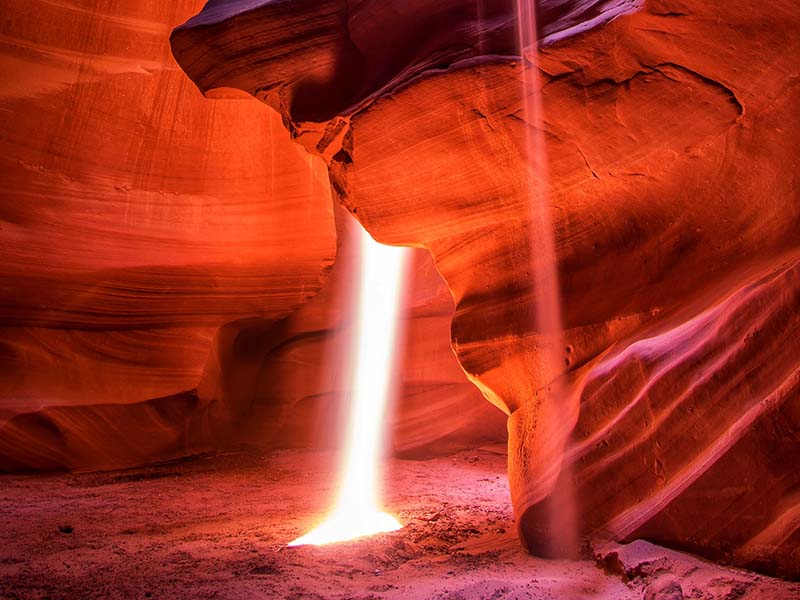
In Conclusion
When contemplating what Antelope Canyon is, everyone can at least agrees it has a rich history. Millions of years of erosion have made it what it is today. More recently, it has become a spiritual place for the Navajo people and a popular destination for travelers around the world.
We hope you enjoyed learning about the history of Antelope Canyon! Consider visiting to see this magnificent site for yourself and learn more about its history from a knowledgeable Navajo guide.
